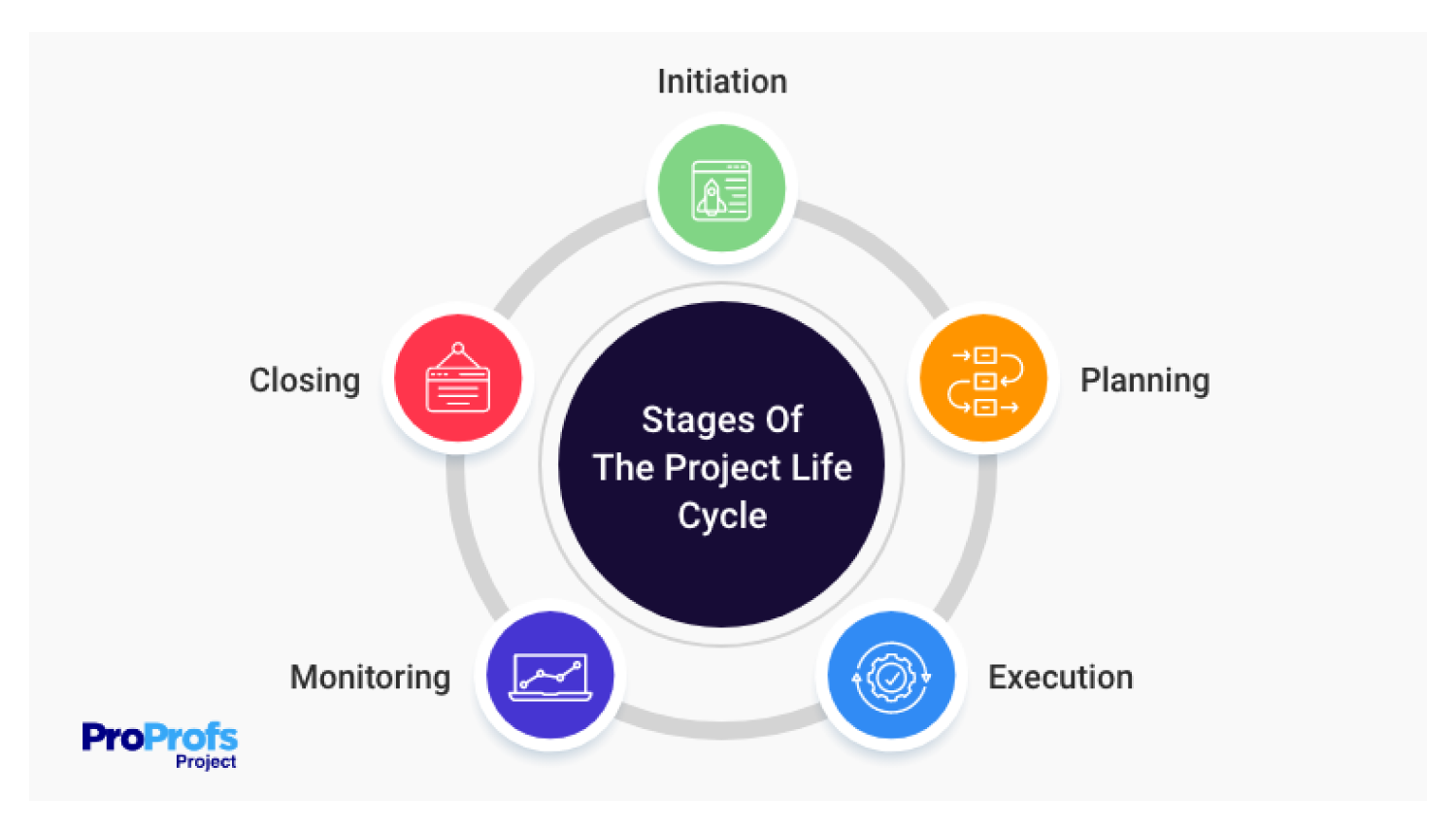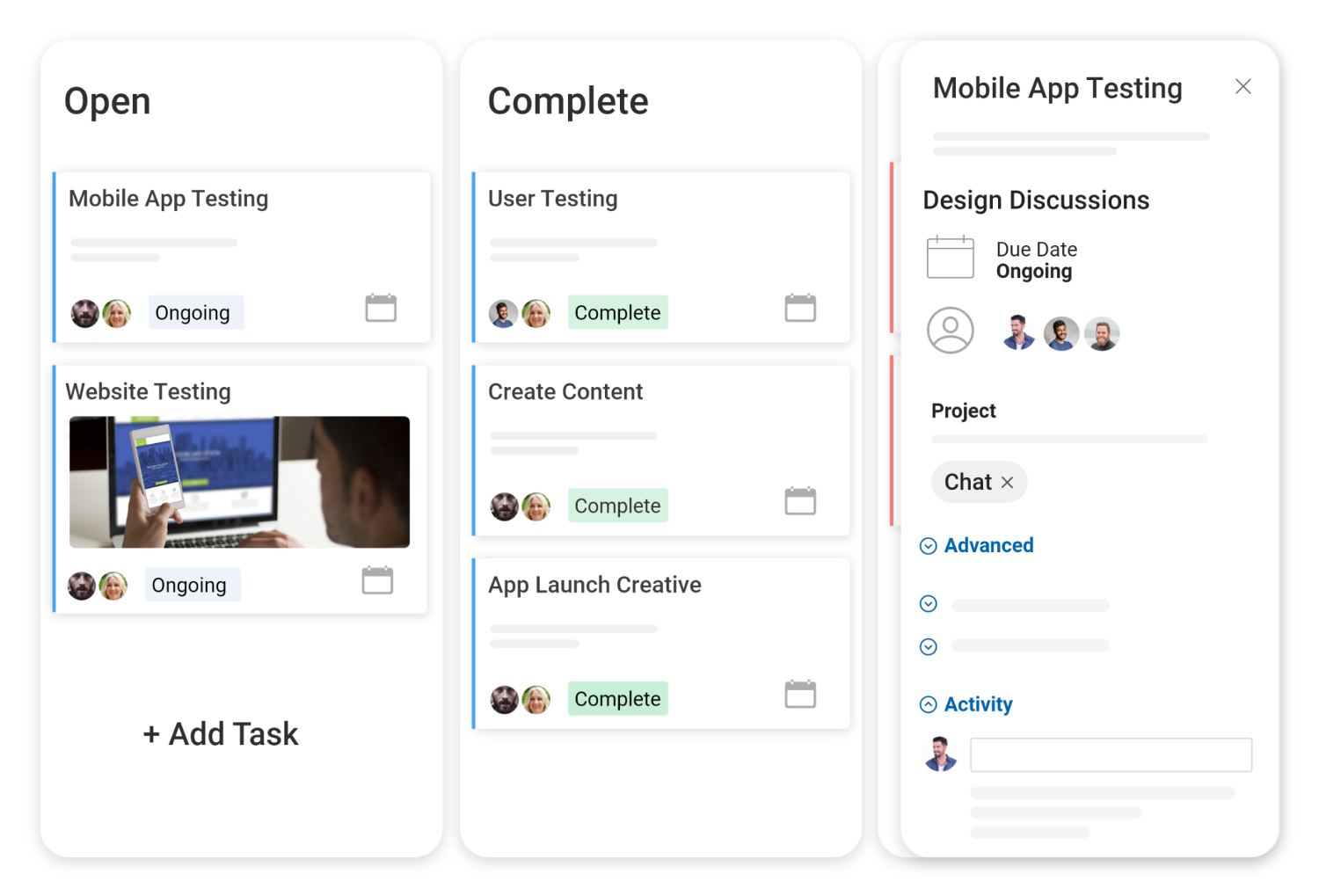Let me share a secret they don’t teach you in business school. The biggest and most expensive project failures I’ve seen didn’t happen because of a technical issue. They failed because people weren’t on the same page.
I’ve led teams for more than a decade. And I’ve learned something important. The success or failure of a project often depends on whether everyone understands the path forward.
That’s why a project life cycle diagram is so powerful.
It may look simple, but this one visual tool can change everything. It helps align your team, avoid surprises, and keep things moving in the right direction. It’s more than a diagram. It tells the full story of your project—from the first idea to the final outcome.
In this post, I’ll show you what that story looks like. You’ll learn each phase of the life cycle, why it matters, and how this one tool can help your projects succeed.
Just in case you are new to the world of project management, this video will be worth your time –
What Is a Project Life Cycle Diagram?
A project life cycle diagram is a visual representation of the key stages every project goes through—from start to finish. It’s not just a chart; it’s a roadmap that helps you see how your project will move through its different phases in a clear, structured way.
The Association for Project Management defines the project management life cycle as “a framework comprising a set of distinct high-level stages required to transform an idea or concept into reality in an orderly and efficient manner.”
In simpler words, the diagram works like a GPS for your project. It shows where you are, what’s next, and how everything connects.
A typical project life cycle diagram helps you:
- Clarify goals and scope
- Organize team responsibilities
- Track progress and manage risks
- Achieve successful, on-time delivery
Without this visual guide, projects often face confusion, misalignment, missed deadlines, and rising costs. The diagram keeps everyone on the same page—making it one of the most effective tools in any project manager’s toolkit.
5 Project Life Cycle Phases With Real-World Steps, Tools & Templates

Every successful project — whether it’s building an app, planning a product launch, or implementing CRM software — follows a logical path. That path is called the project life cycle, and it comprises five crucial stages. Let’s explore each phase with step-by-step guidance, downloadable resources, and real-world applications you can start using today.
Phase 1: Initiation – Defining the “Why” of Your Project
This is the discovery and decision-making stage — where you determine if the project is worth doing and how it aligns with business goals.
Real-World Scenario:
You’re launching a new e-learning product. Before diving into development, you must evaluate market demand, available resources, and alignment with company objectives.
Key Tasks:
- Identify the Business Need: What problem are you solving? Is there a market or internal process inefficiency this project addresses?
- Conduct Feasibility Study: Assess technical, financial, and operational feasibility.
- Create a Project Charter: Summarize project objectives, scope, timeline, and initial budget.
- Identify & Engage Stakeholders: Who will influence or be affected by this project?
- Define High-Level Goals: These should be SMART — Specific, Measurable, Achievable, Relevant, and Time-bound.
Checklist to Avoid Pitfalls:
- Don’t skip stakeholder alignment — it’s the #1 cause of mid-project disputes.
- Don’t begin planning without clearly defined success criteria.
Phase 2: Planning – Building Your Roadmap to Success
This is the heart of the project lifecycle. Every task, resource, risk, and milestone gets mapped out in detail. Solid planning saves countless hours (and dollars) later.
Real-World Scenario:
Your team is set to build the e-learning platform. In this phase, you decide on project milestones like wireframe approval, beta release, and launch timelines.
Key Tasks:
- Develop a Work Breakdown Structure (WBS): Break the project into manageable components and sub-tasks.
- Create a Comprehensive Project Plan: Include task assignments, duration, dependencies, resource needs, and budget.
- Draft a Risk Management Plan: Identify threats, assess impact, and assign risk owners.
- Set Communication Protocols: Establish tools, frequency, and formats for updates (Slack, status reports, weekly huddles).
- Conduct a Kickoff Meeting: Get alignment on goals, team roles, and expectations.
Want a deeper dive into how to build a high-impact project plan? Check out this detailed guide: Master Project Planning in 2025.
Watch Out For:
- Unrealistic timelines or underestimated budgets
- Ambiguous responsibilities that lead to ownership confusion
- Ignoring smaller risks that may snowball into bigger problems
Phase 3: Execution – Turning Plans Into Deliverables

This is where you get things done. Tasks are assigned, resources are consumed, and deliverables start taking shape.
Real-World Scenario:
The dev team starts building course modules. Meanwhile, marketing preps landing pages and social promotions. QA is already building test cases.
Key Tasks:
- Assign & Track Tasks: Use a task management system to assign owners, deadlines, and dependencies.
- Monitor Budget & Time: Time tracking and expense logs help stay within constraints.
- Ensure Cross-Functional Collaboration: Enable team communication through task comments, shared files, and status updates.
- Conduct Quality Checks: Regular reviews ensure that progress meets standards and specifications.
Tools That Help:
- Gantt Charts – for high-level project tracking
- Kanban Boards – for team-level task progress
- Built-in time tracking, invoicing, and workload charts
Pro Tip: Automate repetitive actions like task alerts, invoice generation, and progress emails to save time.
Need help setting up invoicing and expense tracking in your project workflow? Learn how to enable these features here: How to Enable Invoices, Estimates, and Expenses Add-ons.
Phase 4: Monitoring & Control – Staying on Course
While execution is in motion, project managers must actively monitor performance to catch issues early and adapt where needed.
Real-World Scenario:
Midway, you discover that content production is slower than planned. You either extend the deadline, bring in freelancers, or drop low-priority tasks.
Key Tasks:
- Compare Progress Against Baselines: Are you on schedule and within scope?
- Adjust Plan as Needed: Reallocate resources, shift deadlines, or re-prioritize deliverables.
- Conduct Risk Reviews: Use a risk matrix to assess new challenges.
- Report to Stakeholders: Keep sponsors and clients updated with data-driven progress reports.
- Resolve Issues: Quickly remove blockers and handle scope or timeline deviations.
Tools to Use:
- Real-time dashboards
- Team velocity and workload charts
- Gantt charts and Kanban boards
Phase 5: Closure – Final Handoff & Retrospective
Once deliverables are approved, you move to wrap-up. But closure isn’t just checking off boxes — it’s about learning, documenting, and optimizing for future projects.
Real-World Scenario:
The e-learning platform is live, clients are onboarded, and it’s time to evaluate performance and gather feedback.
Key Tasks:
- Confirm Deliverables: Verify all outputs have been delivered, reviewed, and accepted by stakeholders.
- Evaluate KPIs: Did the project meet goals in terms of time, quality, and budget?
- Conduct a Retrospective: Discuss wins, bottlenecks, and unexpected roadblocks with your team.
- Document Lessons Learned: Capture insights in a centralized location.
- Celebrate & Close Contracts: Thank your team and formally close vendor agreements.
Pro Tip: Closure isn’t just formal — it improves morale, preserves knowledge, and builds better processes for your next project.
Absolutely! Here’s a fully elaborated and enriched version of the “Benefits of Following the Project Management Cycle” section, with clearer value propositions and examples for each benefit:
Benefits of Following the Project Management Cycle
Adopting a structured project management cycle isn’t just good practice — it’s a competitive advantage. Whether you’re leading a product launch, a website redesign, or a complex client implementation, managing your project through its lifecycle ensures you stay focused, efficient, and outcome-driven.
Here’s how it transforms your projects from unpredictable to unstoppable:
1. Better Control: Stay on Top of Every Phase
The project lifecycle breaks your work into distinct, manageable phases: Initiation, Planning, Execution, Monitoring, and Closure. This structure gives you a bird’s-eye view of where the project stands, what needs attention, and where it’s headed.
Example: Instead of firefighting during execution, you’ll know in the planning phase if the timeline is unrealistic — and adjust proactively.
Result: Fewer missed deadlines, clearer accountability, and better oversight from start to finish.
2. Improved Team Collaboration: Everyone Knows Their Role
Each phase of the lifecycle brings clarity to team responsibilities. From assigning tasks during planning to daily stand-ups in execution, everyone stays in sync.
Example: A marketing team working on a product launch won’t start writing ad copy without input from the product team — because collaboration checkpoints are baked into the project flow.
Result: Fewer misunderstandings, stronger teamwork, and smoother handoffs.
3. Fewer Surprises: Risks Are Managed, Not Discovered Too Late
The Monitoring & Control phase is designed to catch issues before they snowball. Risk planning during the planning phase prepares you for what could go wrong — from supplier delays to budget overruns.
Example: If you know a key resource might be overbooked next month, you can reassign tasks now instead of panicking later.
Result: Less stress, more predictability, and fewer fire drills.
4. Faster Delivery: Plans That Reduce Rework
When projects are well-scoped, tasks well-assigned, and timelines well-mapped, delivery becomes faster and smoother. You’re not wasting time guessing what comes next or revisiting work due to unclear goals.
Example: With a solid Work Breakdown Structure (WBS) in place, development teams can work in parallel instead of waiting on sequential handoffs.
Result: Accelerated timelines, reduced bottlenecks, and higher productivity.
5. Higher Client Satisfaction: Deliver What You Promised — On Time
Clients love progress. Lifecycle-based management ensures regular status updates, measurable milestones, and clear communication — all of which build trust.
Example: Using real-time dashboards or Gantt charts, you can show clients exactly how the project is progressing and what’s next — boosting transparency and confidence.
Result: Happy clients, glowing testimonials, and more referrals.
Agile vs. Waterfall: Choosing the Right Project Life Cycle Model
There’s no one-size-fits-all approach to managing projects. The two most commonly used life cycle models — Waterfall and Agile — offer very different paths to project completion.
Your choice depends on how clearly your requirements are defined, how likely they are to change, and how involved your stakeholders need to be during the project.
Here’s a side-by-side comparison to help you decide:
| Criteria | Waterfall (Traditional Model) | Agile (Iterative Model) |
|---|---|---|
| Approach | Linear and sequential. Each phase (Initiation → Closure) is completed one after another. | Flexible and adaptive. Work is delivered in short cycles or “sprints” and reviewed constantly. |
| Planning | Extensive planning happens at the beginning. Requirements are locked in early. | Planning evolves throughout the project. Adjustments are made based on feedback and learning. |
| Customer Involvement | Minimal after initial requirements are gathered. | High involvement. Clients/stakeholders review progress during each sprint and give ongoing input. |
| Delivery | One final product delivered at the end of the project. | Continuous delivery of usable features in small batches (every few weeks). |
| Best For | Projects with clear scope and low uncertainty (e.g. infrastructure upgrades, event planning). | Projects with evolving requirements or creative output (e.g. software development, marketing campaigns). |
Common Project Lifecycle Challenges (and How to Fix Them)
Even with a solid plan and the right tools, real-world projects rarely go exactly as expected. If you’ve ever felt blindsided mid-project, you’re not alone. Here are the top project management hurdles — and how to deal with them before they derail your goals.
1. Uncontrolled Project Changes
The Problem:
Your client keeps asking for “just one more thing” — and suddenly the project has doubled in size without extra time or budget.
What It Leads To:
Overworked teams, missed deadlines, and rising frustration.
How to Prevent It:
- Lock the scope early with a signed project charter.
- Use a change request process for all new additions.
- Be transparent about how changes impact deadlines and costs.
2. Resource Gaps
The Problem:
You planned for three people, but one’s out sick, another’s pulled onto another project, and now you’re behind.
What It Leads To:
Delays, burnout, and tasks getting dropped.
How to Prevent It:
- Build resource buffers for critical roles.
- Use workload tracking tools to avoid overload.
- Prioritize high-impact work when resources are tight.
3. Stakeholder Clashes
The Problem:
Marketing wants to launch next week, but the dev team says the product isn’t ready. Leadership is caught in the middle.
What It Leads To:
Conflicting goals, last-minute changes, unhappy clients.
How to Prevent It:
- Align stakeholder expectations during kickoff.
- Use RACI charts to clarify decision-makers.
- Provide regular progress updates with no surprises.
4. Miscommunication
The Problem:
Someone assumed task A was done. Someone else thought task B wasn’t needed. Now everyone’s scrambling.
What It Leads To:
Rework, delays, frustration.
How to Prevent It:
- Define who communicates what, when, and how.
- Use a single platform for tasks, files, and discussions.
- Encourage quick daily or weekly team standups.
5. Resistance to Change
The Problem:
You introduce a new process or tool, and the team doesn’t adopt it. They revert to old habits.
What It Leads To:
Fragmented workflows, data gaps, low morale.
How to Prevent It:
- Involve the team in decisions early.
- Offer hands-on training and support.
- Highlight how the change makes their jobs easier.
Achieve Project Success With Clarity and Confidence
Unlock better results by following a structured project lifecycle — from laying a strong foundation to closing with valuable lessons learned. When every phase is clearly mapped out, you gain more than just order — you gain control, momentum, and measurable outcomes.
By breaking projects into actionable stages, aligning teams, and managing risks before they escalate, you turn chaos into clarity and guesswork into confident execution.
And if you’re looking for a practical way to apply everything discussed here, from creating task timelines to tracking progress visually. A tool like ProProfs Project can help streamline your workflow without adding complexity.
Because project success isn’t just about managing work — it’s about mastering the journey.
Frequently Asked Questions
What should be included in a project life cycle diagram?
A well-designed project life cycle diagram should include all five phases of a project, labeled clearly. It should also display key milestones, decision points, and arrows showing the sequence and feedback loops. Optionally, add visuals like icons or brief notes to enhance clarity and support better team communication.
When should I use a project life cycle diagram?
Use a project life cycle diagram at the beginning of a project to align your team and stakeholders. It’s also helpful during updates, reviews, or retrospectives to show where the project stands or how it progressed. It’s especially useful in presentations to communicate complex workflows simply and clearly.
What types of project life cycle diagrams are used in different industries?
Different industries may use varied project life cycle diagrams. Traditional models show linear flow, while software or agile teams often use iterative or incremental diagrams with feedback loops. Hybrid diagrams combine both approaches. The best diagram format depends on your project's complexity, flexibility needs, and the preferred workflow of your team.
FREE. All Features. FOREVER!
Try our Forever FREE account with all premium features!





